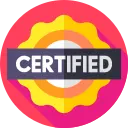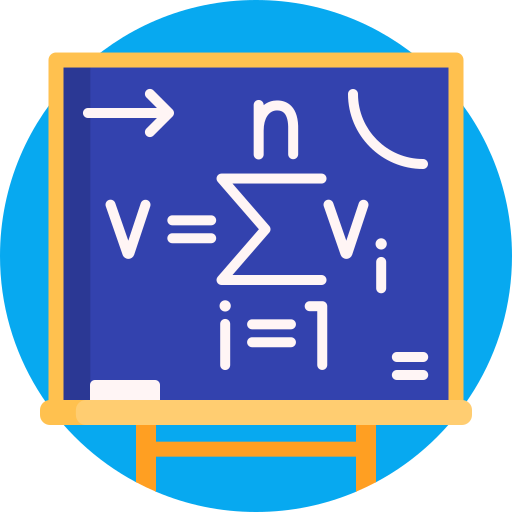About this Course
Machine Learning for Brain Signal Decoding
This comprehensive course provides an in-depth exploration of how machine learning techniques are applied to decode and interpret brain signals. It focuses on the intersection of neuroscience and artificial intelligence, with a specific emphasis on the decoding of neural activity patterns to extract meaningful information about cognitive processes, motor functions, and sensory perceptions.
Students will gain a solid understanding of the theoretical foundations of machine learning and its practical application in brain signal decoding. They will learn about various neural signal acquisition methods, including electroencephalography (EEG), magnetoencephalography (MEG), functional magnetic resonance imaging (fMRI), and intracranial recordings, and how these signals can be effectively processed and pre-processed for machine learning analysis.
The course delves into different machine learning algorithms, such as support vector machines, neural networks, and deep learning architectures, and their suitability for brain signal analysis. Students will explore how these algorithms can be trained to recognize patterns in brain activity, identify specific brain states or cognitive tasks, and predict motor intentions or sensory responses.
Furthermore, the course covers advanced topics, including transfer learning, domain adaptation, and data augmentation, to address the challenges posed by limited and heterogeneous brain signal data. Students will also learn how to evaluate the performance of machine learning models in brain signal decoding, considering metrics such as accuracy, sensitivity, specificity, and area under the curve (AUC).
A significant portion of the course is dedicated to real-world applications of machine learning for brain signal decoding. Students will examine case studies involving brain-computer interfaces (BCIs), neuroprosthetics, and brain-controlled robotics. They will understand how machine learning is instrumental in translating brain activity into meaningful control signals for assistive devices and applications in neurorehabilitation.
The course fosters hands-on learning through practical exercises and projects. Students will work with real brain signal datasets, apply machine learning algorithms, and develop their own brain signal decoding models. They will also gain insights into the ethical considerations and privacy concerns associated with brain signal data analysis and the responsible use of machine learning techniques in neuroscience research.
Upon completing the course, students will possess the necessary skills and knowledge to contribute to cutting-edge research in the field of brain signal decoding and its application in healthcare, human-computer interaction, and cognitive neuroscience.
External Resources
Sign in to enroll and start your certification.
How to Get Certified

Complete the Course
Answer the certification questions by selecting a difficulty level:
Beginner: Master the material with interactive questions and more time.
Intermediate: Get certified faster with hints and balanced questions.
Advanced: Challenge yourself with more questions and less time

Earn Your Certificate
To download and share your certificate, you must achieve a combined score of at least 75% on all questions answered.
Course Features
Honorary Certification
Receive a recognized certificate before completing the course.
Learning Pack
Get a carefully curated set of materials to help you learn better in this course.
Pricing Plans
Currency
Sign in to change your currency
I'm not ready to enroll?
Our team is here to help you choose the best options for your learning goals.
Frequently Asked Questions
For detailed information about our Machine Learning for Brain Signal Decoding course, including what you’ll learn and course objectives, please visit the "About This Course" section on this page.
The course is online, but you can select Networking Events at enrollment to meet people in person. This feature may not always be available.
The course doesn't have a fixed duration. It has 21 questions, and each question takes about 5 to 30 minutes to answer. You’ll receive your certificate once you’ve answered most of the questions. Learn more here.
The course is always available, so you can start at any time that works for you!
We partner with various organizations to curate and select the best networking events, webinars, and instructor Q&A sessions throughout the year. You’ll receive more information about these opportunities when you enroll. This feature may not always be available.
You will receive a Certificate of Excellence when you score 75% or higher in the course, showing that you have learned about the course.
An Honorary Certificate allows you to receive a Certificate of Commitment right after enrolling, even if you haven’t finished the course. It’s ideal for busy professionals who need certification quickly but plan to complete the course later.
The price is based on your enrollment duration and selected features. Discounts increase with more days and features. You can also choose from plans for bundled options.
Choose a duration that fits your schedule. You can enroll for up to 7 days at a time.
No, you won't. Once you earn your certificate, you retain access to it and the completed exercises for life, even after your subscription expires. However, to take new exercises, you'll need to re-enroll if your subscription has run out.
To verify a certificate, visit the Verify Certificate page on our website and enter the 12-digit certificate ID. You can then confirm the authenticity of the certificate and review details such as the enrollment date, completed exercises, and their corresponding levels and scores.
Can't find answers to your questions?
Discussion Forum
Join the discussion!
No comments yet. Sign in to share your thoughts and connect with fellow learners.






